How to Wire 3-Phase Electrical Distribution Board & Consumer Unit in Home
In our today electrical wiring installation tutorial, we will show how to wire and install a Three Phase distribution board and Consumer Unit from utility pole to a 3-Phase Energy Meter & 3-Phase Distribution board. We will also be showing that How to connect Three Phase & Single Phase Load circuits in a Three Phase Wiring Distribution System in home and commercial electric supply system.
Related Wiring Tutorials:
- 3-Phase Electrical Distribution Wiring Installation in Multistory Building
- Single Phase Electrical Wiring Installation in Home – NEC & IEC
- Single-Phase Electrical Wiring installation in a Multi-Story Building
What is Three Phase & Single Phase Power?
In power generation plants, Three Phase power is generated by an electrical generator or alternator. In an alternator, the generated voltage and current by three independent coils in the stator are separated by 120 degrees from each other. The generated power from alternators then transmitted and distributed through transmission and distribution lines to the sub distribution. Both single phase and three phase supply is further distributed by the three single phase transformers or a single unit of three phase transformer (configured in Star “Y” or Delta Connection) installed on the utility pole near the residential or commercial area.
The voltage levels are step-up via step-up transformers for power transmission. In the distribution system, they are again step-down the level of voltage via step-down transformer for further utilization. RCD, MCB, MCCB, CB, RCD, RCBO, Fuses, Switches etc are used as controlling and protective devices in the MDB, DB, Sun & Final Sub circuits. For example,
In the UK and EU, 11kV from the step-down transformer wired in Delta connection via (3 Phase, 3-Wires System) enters the 400V/230V distribution transformer wired in Star “Y” Connection (Three Phase, 4 Wires System).
In the US, 4.5k-7.2kV from the step-down transformer wired in Delta connection via 3 Phase, 3-Wires System enters the 240V/120V distribution transformer wired in Star Connection (Two Phase, 3 Wires System). For a three phase system, the arrangement can be different for different levels of voltage. We will show the wiring diagram in the next sections of this post.
Related Wiring Tutorials:
As high power is needed in industrial and commercial buildings, they are connected to the three phase Delta connection (3 Phase – 3 Wire System – No Neutral Wire) before distribution transformer and then manage the required voltage and current according to the system requirements in three phase and single phase supply.
On the other hand, buildings that need low as well as high power in three phase and single phase are connected to the secondary of the distribution transformer. This way, they get a three phase Star connection (3-Phase, 4 Wire System with Neutral Wire). In the Star connection, Three Phase Line to Line (Phase to Phase) voltages are 400V AC (in US, 208V, 240V, 480V etc) and Single Phase Line to Neutral (Phase to Neutral), there are 230V AC (120V, 208V, 240V, 277V, 480V etc in the US).
In Three Phase Supply, motors and large electric heaters can be directly connected to the three Phases (Neutral is not needed in all cases) while in Single Phase, load circuits (light, fan etc.) can be connected in between Phase and Neutral through proper protective devices e.g. earthing/grounding wire. In the US, The 240V Single phase load can be connected to two phases without a Neutral wire.
Why Do We Need Three Phase Power Supply?
To operate high power equipment and appliances such as electric motors, high power rated air compressors & air-conditions, water heaters etc. we need Three Phase Power supply instead of Single Phase Power supply. In ordinary homes (domestic as residential), we mostly use Single Phase power supply to operate lighting load, fans, washing machines etc. But in some cases e.g. industries, high torque motors, multi-story & large buildings (industrial as commercial), Three Phase power supply needed to operate and maintain the high power and voltage systems.
In our previous posts about Single Phase electrical wiring installation in home and already know what MDB, DB, Final Sub Circuit, MCB, MCCB, CB and RCD etc. So we will never repeat it again.
Related Posts:
3-Phase & 1-Phase Voltage Levels in the US – NEC
In United States and Canada, different single phase and three phase voltage levels are available i.e. single phase voltage is available for domestic and residential applications while three phase voltage can be used for industrial and commercial applications.
Following are the Voltage levels available in the USA and Canada.
3-Phase Voltage in the USA
- Three Hots (3-Lines) = 208V- 3-Φ
- Three Hots (3-Lines) – High Leg Delta = 240V – 3-Φ
- Three Hots (3-Lines) – Delta = 480V- 3-Φ
- Three Hots (3-Lines) – Wye = 600V- 3-Φ
i.e.
- Between L1, L2 & L3 = 208V, 240V, 480V or 600V – (3-Phase)
1-Phase Voltage in the USA
- Hot to Neutral = 120V – 1-Φ
- Hot to Neutral = 208V, (High Leg Delta) – 1-Φ
- Two Hot = 240V – 1-Φ (Split Phase)
- Hot to Neutral – Wye = 277V – 1-Φ
- 2 Hots + Neutral – Wye = 480V – 1-Φ
- Hot + Neutral – Wye = 347V – 1-Φ
i.e.
-
- L1 to N = 120V, 208V, 277V, 347V, 480V or 600V – (1-Phase)
- L2 to N = 120V, 208V, 277V, 347V, 480V or 600V – (1-Phase)
- L3 to N = 120V, 208V, 277V, 347V, 480V or 600V – (1-Phase)
Note: In case of High Leg Delta (Power Leg or Wild Leg), additional of 208V single phase voltage are available between High Leg & Neutral as well as 120V, & 240V are available from the meter box to the load center and panel box.
Related Wiring Tutorials:
- How to Wire 1-Phase Split Load Consumer Unit? – RCD+RCBO
- How to Wire 230V Dual Split Load Consumer Unit? – RCD+MCB
Three Phase and Single Phase Supply Voltage Systems “120V, 208V, 240V, 277V & 480V” – NEC – US
High Leg Delta Configurations (120V, 208V & 240V)
3-Phase & 1-Phase Voltage Levels in the UK, EU – IEC
The three phase system is simpler in the UK & EU as compared to the USA and most of the countries (e.g. India, Pakistan, UAE and other Arab countries) follow the same voltage distribution system as UK, EU and IEC voltage levels. Both three phase and single phase voltage are available for residential and commercial application in the same unit as follows.
3-Phase Voltage in the UK & EU
- Phase to Phase = 400V
- Any Phase to Neutral = 230V – (1-Φ)
- Between Three Phases = 400V – (3-Φ)
I.e.
- L1 to L2 = 400 V – (3-Phase)
- L2 to L3 = 400 V – (3-Phase)
- L3 to L1 = 400 V – (3-Phase)
1-Phase Voltage in the UK & EU
- Phase to Neutral = 230V
i.e.
- L1 to N = 230 V – (1-Phase)
- L2 to N = 230 V – (1-Phase)
- L3 to N = 230 V – (1-Phase)
230V & 400V Single Phase & Three Phase Power Supply Systems – IEC – UK & EU
Related Posts:
Requirements for Three Phase Wiring Installation
In this tutorial, we need the following wiring accessories to wire three phase power in home.
- Three Phase Energy meter: 1 No
- Three Pole MCCB, 63A (100 or 250A in US) : 1 No
- Double Pole: 63A, 30mA Trip Current (RCD/GFCI): 3 No
- Triple Pole MCBs, 63A (100-250A In US): 3 Nos
- Single Pole, 20A, MCB: 6 Nos
- Single Pole, 16A (20A in US): MCB: 3 Nos
- Single Pole, 10A (15A in US): MCB: 6 Nos
- Distribution board cases: 3 Nos
- Bus bar Link for Neutral Cable Connections
- Copper strips for MCB common connection: 3 Nos (Cu Busbar segment)
- Copper strip Busbar for Earth & Ground Link
How to Wire Three Phase Main Distribution Board?
Generally, Electric supply and service providers install a single phase energy meter when load is less than 7.5kW (10HP) in domestic areas (consumer unit for home). If the limit is exceeded, then it’s recommended to install a 3-phase energy meter for consumer units. When load exceeds from 7.5 kW, then 3-phase electrical wiring is recommended in domestic areas (homes).
In this tutorial, We assume that we will only connect single phase load (Light points, fans, TV, Power Socket, AC etc.) in the current section of three phase electrical wiring installation. In other words, we will not power up 3 phase motors because in our homes, we don’t have that kind of (three phase) loads. If a three phase load exists in your home, then you can do so. As we can see that the total load is exceeded the limit of single phase electrical wiring installation as we will be feeding different rooms and areas in home, that’s why we have to wire our distribution in three phase system. For direct three phase loads, see the next sections in this post.
Practical Procedure of Three Phase wiring of distribution board & installation
We have learned the basic electrical wiring of bulb, fans etc (i.e. Sub-circuits and final sub circuits) in our previous posts, so follow the steps below to do the same as mentioned below.
- First of all, connect the three-phase energy meter as shown in fig. (if you don’t sure how to wire a 3-phase energy meter, then check this simple tutorial which shows How to wire a Three-Phase Energy Meter.
- Connect the MCCB (Molded Case circuit Breaker) as main switch to the incoming three phases (R, Y, B) from 3-phase energy meter. (Check the wiring color code for different areas in below section)
- Now connect the outgoing three phases (R, Y, B) from MCCB (Molded Case circuit Breaker) to the DP (Double Pole MCB , RCD, SP (Single Pole MCBs and load) as shown in fig)
- Now connect the RCD from DP with Phase (Line) and Related Neutral Link. The Outgoing Phase lines should be connected to the final and final sub circuits. The same can be done for Neutral Wires.
- Finally, Connect the electrical appliances with the Earth link terminal which leads to the earth electrode in the earthing and grounding system as shown in fig below.
- Follow the same steps for all three distribution boards for different rooms and areas.
Good to Know: You may also use a Four Pole MCCB or MCB instead of Three Pole MCCB/MCCB. Simply connect the Neutral wire in the last slot of that MCCB (The letter N for Neutral is printed on the nameplate). Incoming and Outgoing Neutral wire like other phases should be connected to the copper strip (i.e. Earth-link or Neutral bar in the panel b box) as shown in fig.
In addition, If you need to connect a single phase load or need to wire a separate consumer unit or subservice panel, read the previous published posts on single phase wiring diagrams.
Related Posts:
Below are given the Three Phase Distribution Electrical Wiring Installation Diagram according to NEC & IEC.
Three Phase Electrical Wiring Installation Diagrams – US -NEC
Three Phase 208V Distribution and Panel Wiring.
Click image to enlarge
Three Phase 240V (High Leg Delta) Distribution and Panel Wiring.
Click image to enlarge
Three Phase 480V Distribution and Panel Wiring.
Click image to enlarge
Good to know: it is against the code to use three separate single pole circuit breakers for 208V or 240V or 480V circuits. If you still want to connect three SP breakers as triple pole for three phase circuit, the switches of all the breakers should be bonded and connected together i.e. All the SP breakers should be switched ON & OFF with the same common switch. In addition, use the proper rated breaker, wire size, outlets, and switches etc. (check the bottom note (instruction & precaution) for calculators and tutorials about wire size, sizing outlets, switches and socket etc.
Related Posts:
- How to Wire Single-Phase, 230V Consumer Unit with RCD? IEC, UK & EU
- How to Wire 1-Phase & 3-Phase Split Load Distribution Board?
- How to Wire Automatic UPS / Inverter to the Home Supply System?
Three Phase Electrical Wiring Installation Diagrams – UK, EU – IEC
Click image to enlarge
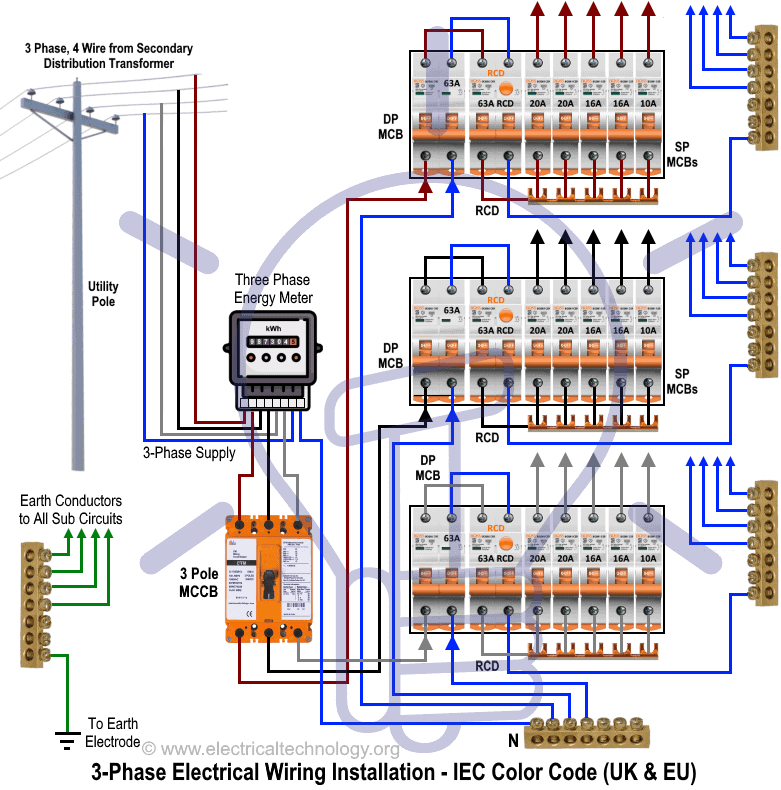
Note: The same description and details can be used for both NEC and IEC wiring diagrams as mentioned for the above general fig 1.
Three Phase, 400V, Split Distribution Board Wiring with RCD – Only 3-Φ Loads
Click Image to enlarge
Three Phase, 400V, Split Distribution Board Wiring with RCD – 1-Φ Loads from 3-Φ Supply
Click image to enlarge
Three Phase, 400V, Split Distribution Board Wiring with RCD – Combo of 3-Φ & 1-Φ Loads
Click Image to enlarge
Three Phase, 400V, Typical Distribution Board Wiring with RCD for 3-Φ Load Circuits
Click image to enlarge
Three Phase, 400V, Typical Distribution Board Wiring with RCD for Both 3-Φ & 1-Φ Load Circuits
Click image to enlarge
Related Posts:
Good to Know: According to IET (Institution of Engineering and Technology) wiring regulations: 17th Edition (BS 7671:2008 – 1: 2011), an RCD protection must be provided in the consumer unit except smoke and burglar alarms system.
How to Connect Single Phase 120V Loads in a 1-Phase Wiring Distribution System? – NEC – US
Three phase load circuits can be directly connected to the three hot wires. Keep in mind that Neutral is not needed in all cases. The single phase load can be connected to hot and neutral (120V) or two hot wires (240V single phase). Below are the typical three phase panel wiring for US and Canada.
Wiring Installation of Three Phase, 208V Circuits & Breakers in Main Service Panel.
Wiring Installation of Three Phase 240V (High Leg Delta) Circuits & Breakers in Main Service Panel.
Wiring Installation of Three Phase 480V Circuits & Breakers in Main Service Panel.
Related Posts:
How to Connect Three Phase, 400V Loads in a 3-Phase Wiring Distribution System? – IEC & UK
As mentioned above, Three Phase loads (400V, 3-Phase Motors) can be directly connected to the three lines accordingly i.e. there is no need to connect to the neutral point (In some cases, Neutral is still needed in a three phase system which depends on the system design. Refer to the user manual before installing such an appliance). For Single Phase Loads (230V or 120V AC Light, TV, Power socket, Fans etc.), they can be connected to the Phase and Neutral wire as shown below. Note that Earth or ground wire must be connected to the electrical appliances and equipment connected to both single phase and three phase supply systems for safety as it prevents electric shock hazards.
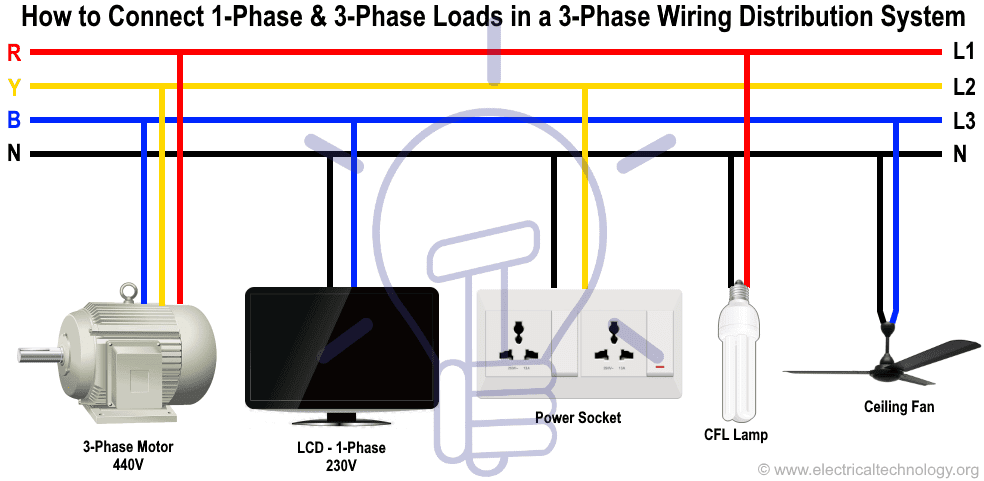
Wiring 3-Phase, 400V Load Points and MCB with RCD & RCCB in Distribution Board
Wiring Three Phase 400V load and MCB’s in the Split Load Distribution board and consumer unit with RCD.
Wiring Typical Three Phase 400V load circuits and MCB in the Distribution board and consumer unit.
Related Posts:
- Staircase Wiring Circuit Diagram – How to Control a Lamp from 2 Places?
- Corridor Wiring Circuit Diagram – Hallway Wiring using 2-Way Switches
Schematic Wiring Diagram of Three Phase Distribution Board
The following typical layout wiring diagram shows three phase distribution board and consumer unit installation in a residential/commercial area.
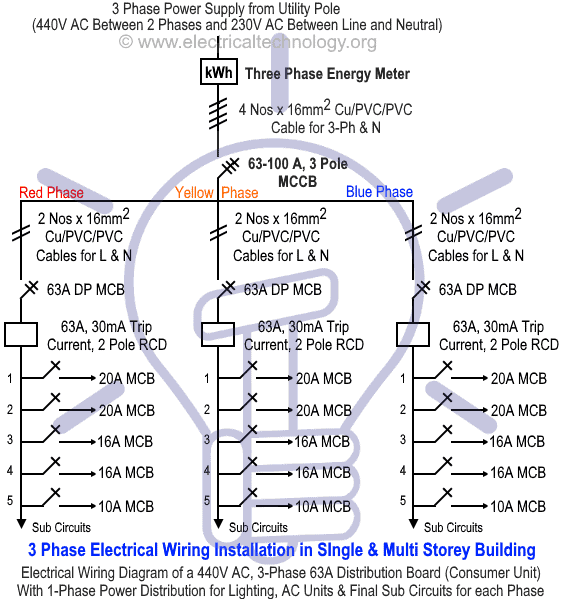
Three Phase Wiring Color Codes – IEC and NEC
We have used Red for Phase, Live or Hot, Black for Neutral and Green for Earth/Ground Wire in the typical single phase wiring diagram. You may use the specific region or general practiced codes in the local area i.e. IEC – International Electrotechnical Commission (UK, EU etc.) or NEC (National Electrical Code [US & Canada] see the detailed post about NEC & IEC wiring Color Codes where;
NEC – USA:
Three Phase 208V & 240V AC (High Leg Delta):
- Blue = Hot 1 or Line 1
- Orange = Hot 2 or Line 2 (in the middle)
- Black = Hot 3 or Line 3
- White = Neutral
- Green with Yellow stripe or bare Conductor = Ground/Earth or Protective Ground “PG”.
Three Phase 277V & 480V AC:
- Yellow = Hot 1 or Line 1
- Orange = Hot 2 or Line 2 (in the middle)
- Brown = Hot 3 or Line 3
- White = Neutral
- Green with Yellow stripe or bare Conductor = Ground/Earth or Protective Ground “PG”.
Single Phase 120V AC:
- Black = Hot or Line,
- White = Neutral
- Green with Yellow stripe or bare Conductor = Ground/Earth or Protective Ground “PG”.
Single Phase 240V AC:
- Black = Hot 1 or Line 1
- Red = Hot 2 or Line 2
- White = Neutral
- Green with Yellow stripe or bare Conductor = Ground/Earth or Protective Ground “PG”.
Related Posts:
IEC & UK:
Three Phase 400V:
- Brown = Phase 1
- Black = Phase 2
- Gray = Phase 3
- Blue = Neutral
- Green or Green with Yellow Stripe = Earth or Ground wire as protective earth (PE).
Single Phase 230V AC:
- Brown = Phase or Line
- Blue = Neutral
- Green or Green with Yellow stripe = Earth/Ground or Protective Earth “PE”.
For reference, here is the OLD UK Wiring Color Codes (Prior 2004) which still applicable in other countries i.e. India, Pakistan, UAE, KSA and other Arab Countries.
400V Three Phase
- Red = Phase 1
- Yellow = Phase 2
- Blue = Phase 3
- Black = Neutral
- Green = Earth or Ground wire.
230V Single Phase
- Red = Phase
- Black = Neutral
- Green = Earth or Ground wire.
Related Posts:
General Precautions & Instructions
- Electricity is our friend as well as enemy at the same time, if you give it a chance to kill you, Remember, they will never miss it. Please read all caution and instruction while doing this tutorial in practical.
- Disconnect the power supply (and make sure it is really swathed OFF) before servicing, repairing or installing electrical equipment. To do so, switch off the main switch in the main consumer unit or distribution board.
- Never stand or touch wet and metal parts while repairing or installation.
- Read carefully all the cautions and instructions and follow them strictly while doing this tutorial or any other work in practical related to electrical works.
- Always, use the right size cable and wire, proper size outlets and switch and suitable size of circuit breakers. You may also use the Wire and Cable size calculator to find the right gauge size.
- Never ever try to play with electricity (as it is dangerous and can be fatal) without proper guidance and care. Do the installation and repairing work in presence of experienced persons having vast knowledge and good practice who knows how to deal with electricity.
- Doing your own electrical work is dangerous as well as illegal in some cases. Contact the licensed electrician or the electric power supply provider before practicing any change/modification in electrical wiring connections.
- The distribution board should not be installed 2.2 meter (84 Inches = 7ft) while the disconnect switch should be installed 1.82 meter (72 inches = 6 ft) above the floor, must be protected from the corrosion and away from watery areas. All the wires and cables should be covered in the panel board (i.e. it should not hang outside the panel). Finally, there must be a safety sign near the distribution board.
- The author will not be liable for any losses, injuries, or damages from the display or use of this information or if you try any circuit in wrong format. So please! Be careful because it’s all about electricity and electricity is too dangerous.
You may also check the related Electrical Wiring Installation Tutorials.
- Staircase Wiring Circuit Diagram – How to Control a Lamp from 2 Places?
- Corridor Wiring Circuit Diagram – Hallway Wiring using 2-Way Switches
- Tunnel Wiring Circuit Diagram for Light Control using Switches
- Hospital Wiring Circuit for Light Control using Switches
- Hotel Wiring Circuit – Bell Indicator Circuit for Hotelling
- Hostel Wiring Circuit Diagram and Working
- Godown Wiring Diagram – Tunnel Wiring Circuit and Working
- How to Wire 120V Water Heater Thermostat – Non-Simultaneous?
- How to Wire a Pilot Light Switch? Wiring of 2 & 3 Way Neon Light Switches
- How to Connect a Portable Generator to the Home Supply – 4 Methods
- Even More Electrical Wiring Installation & Tutorials
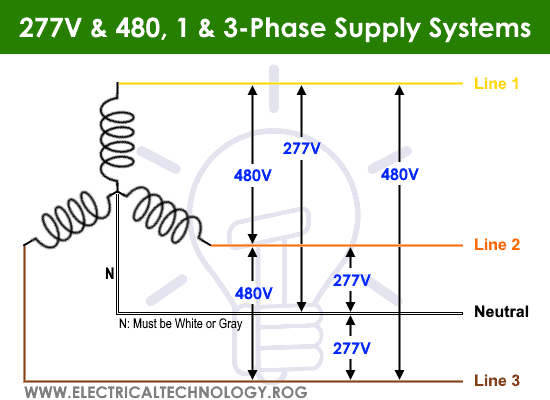
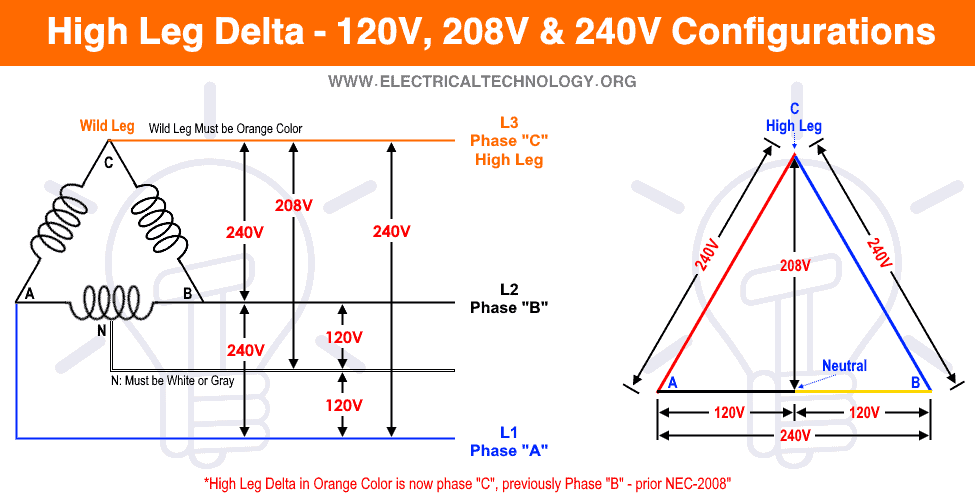
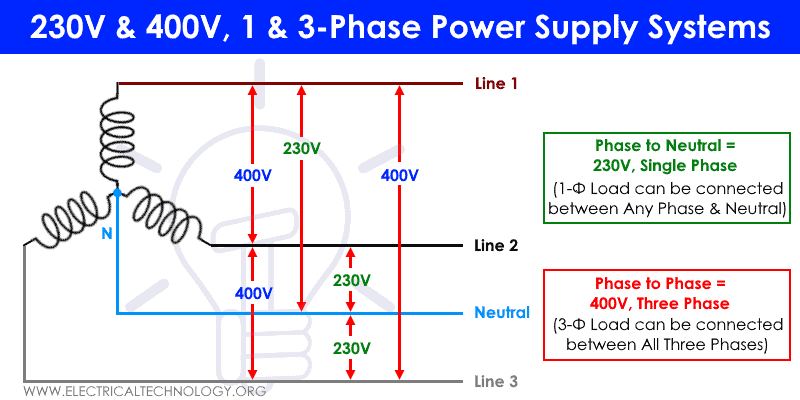
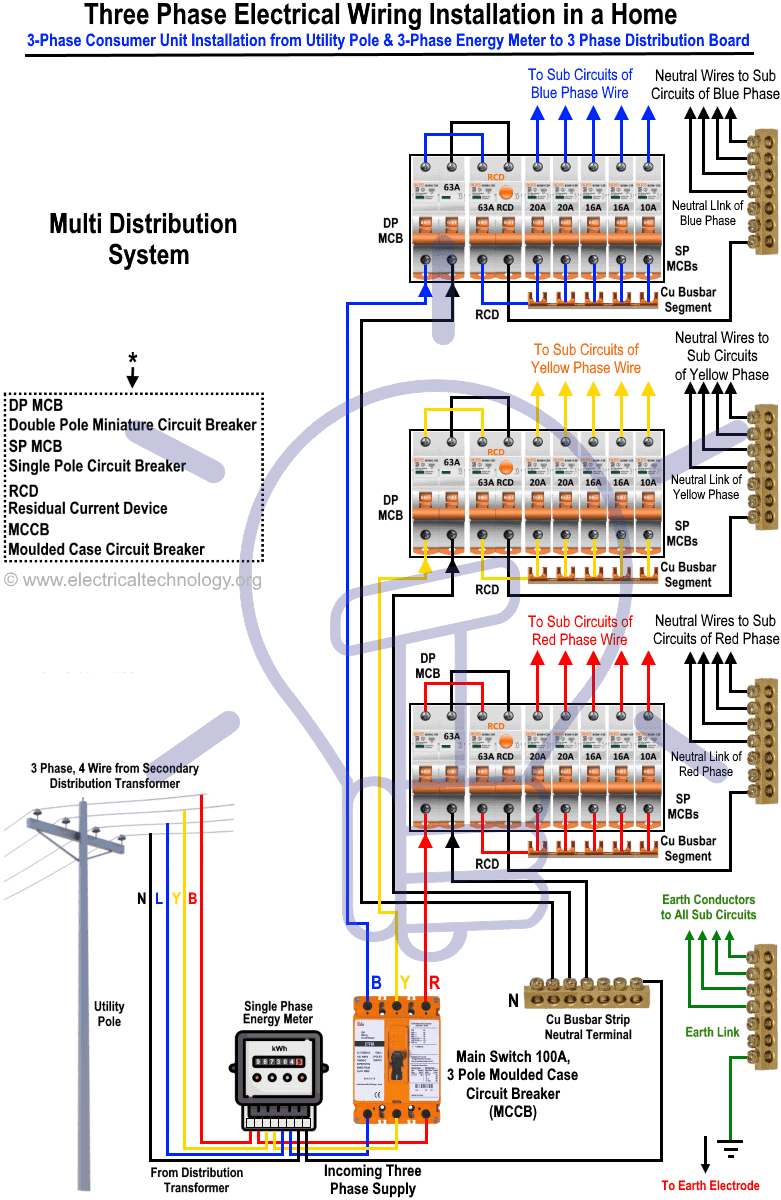
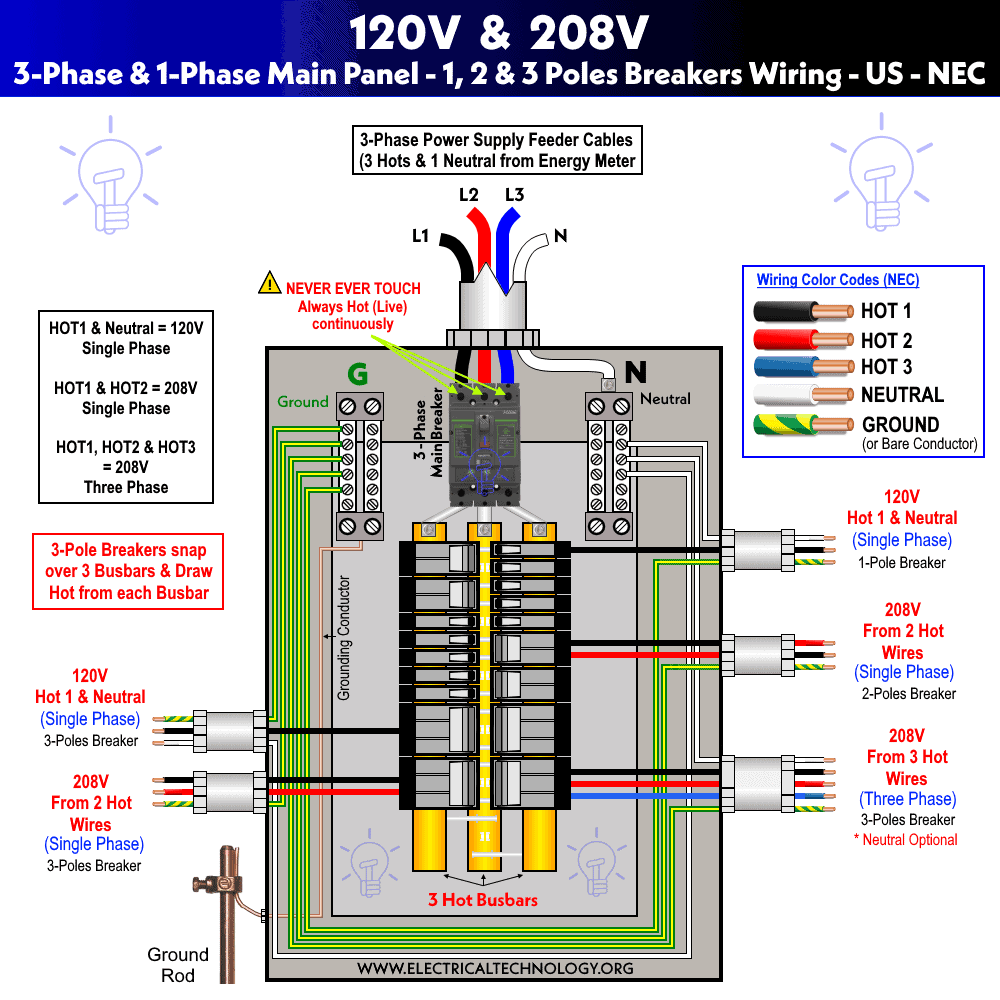
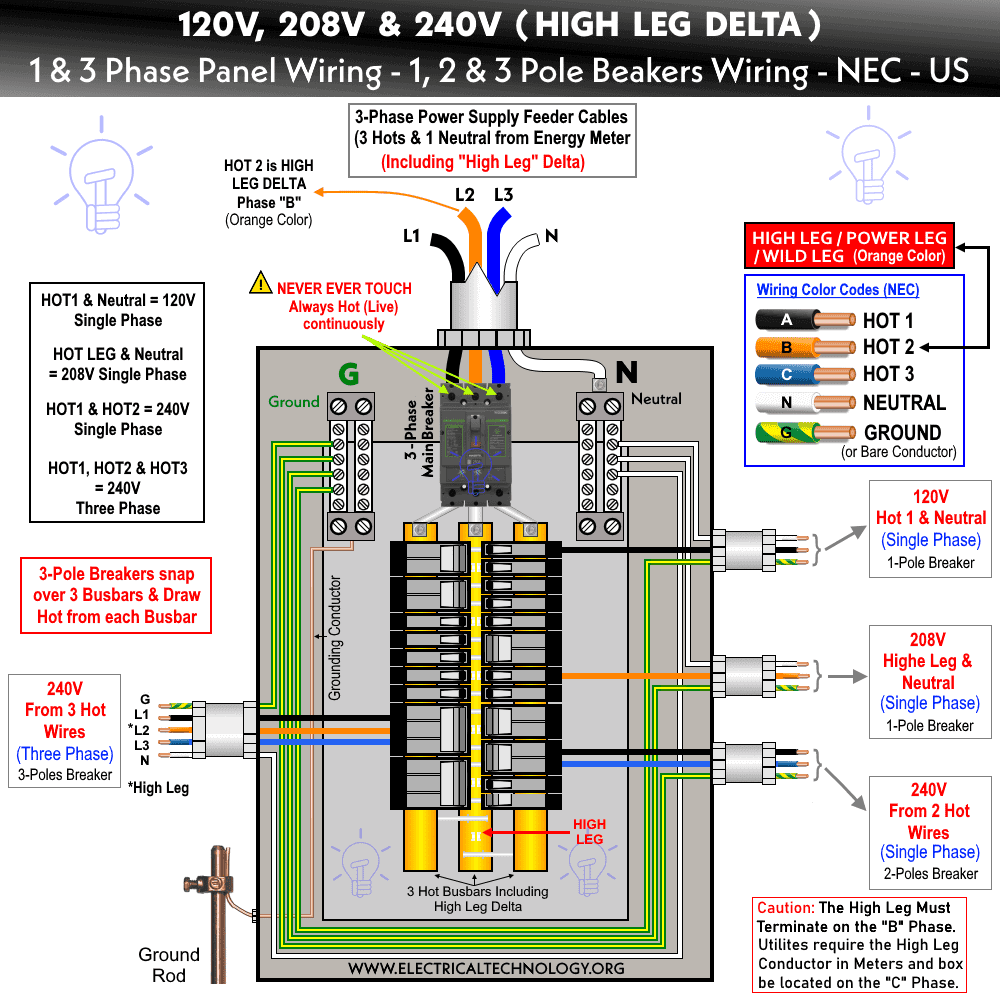
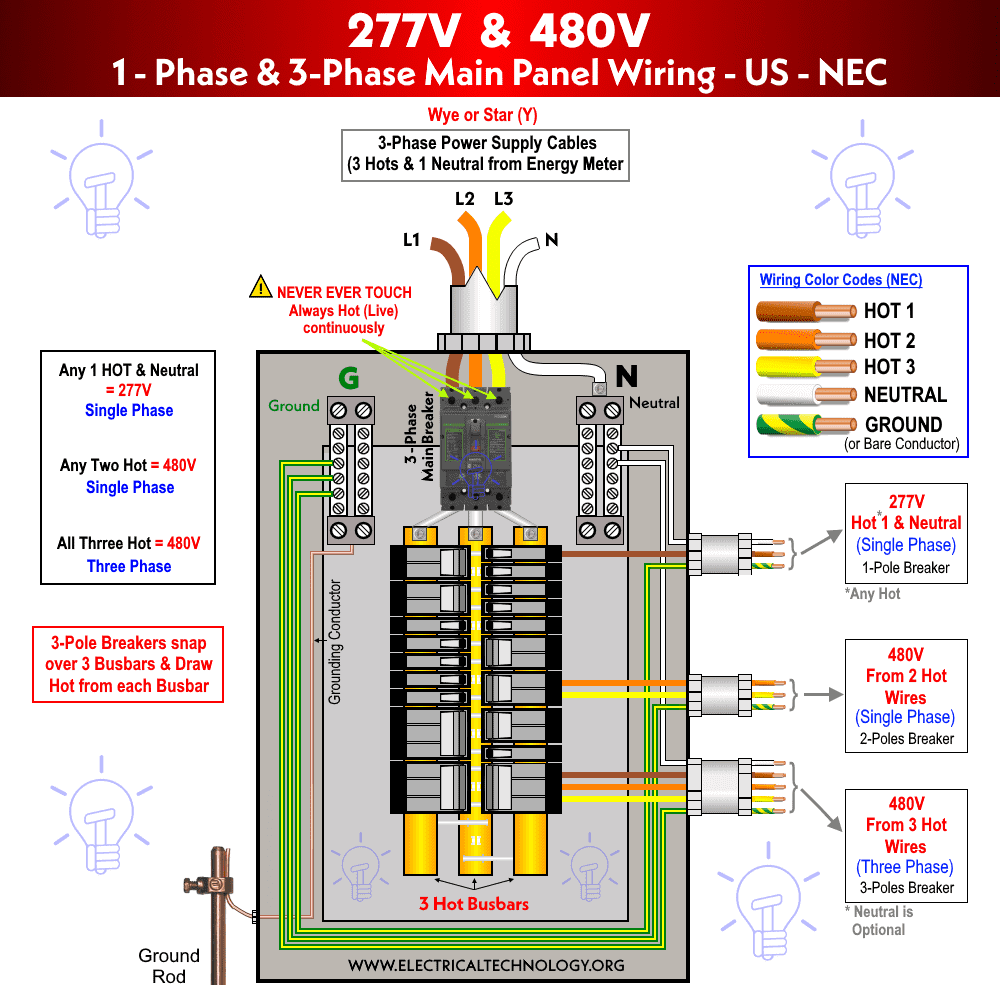
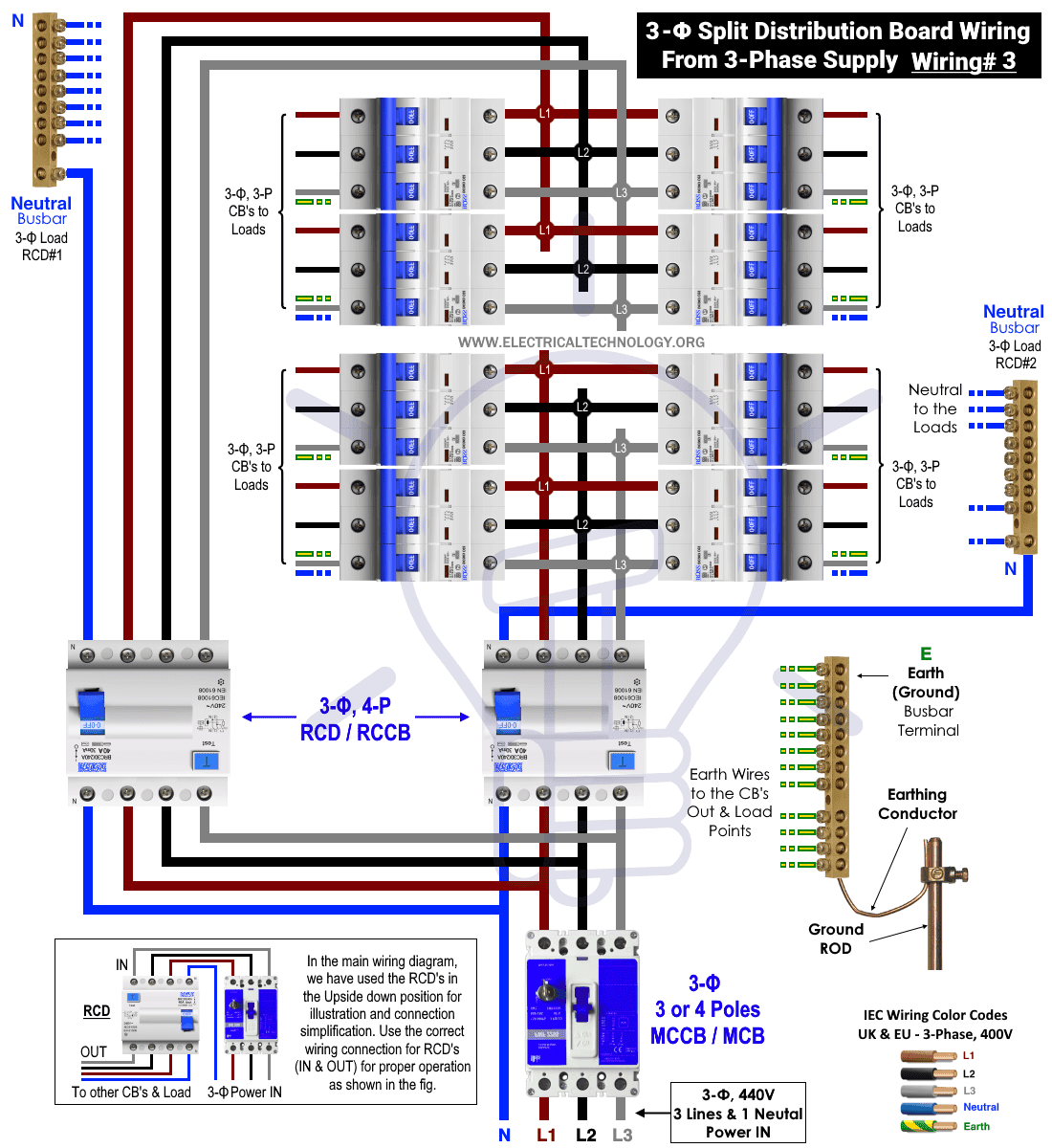

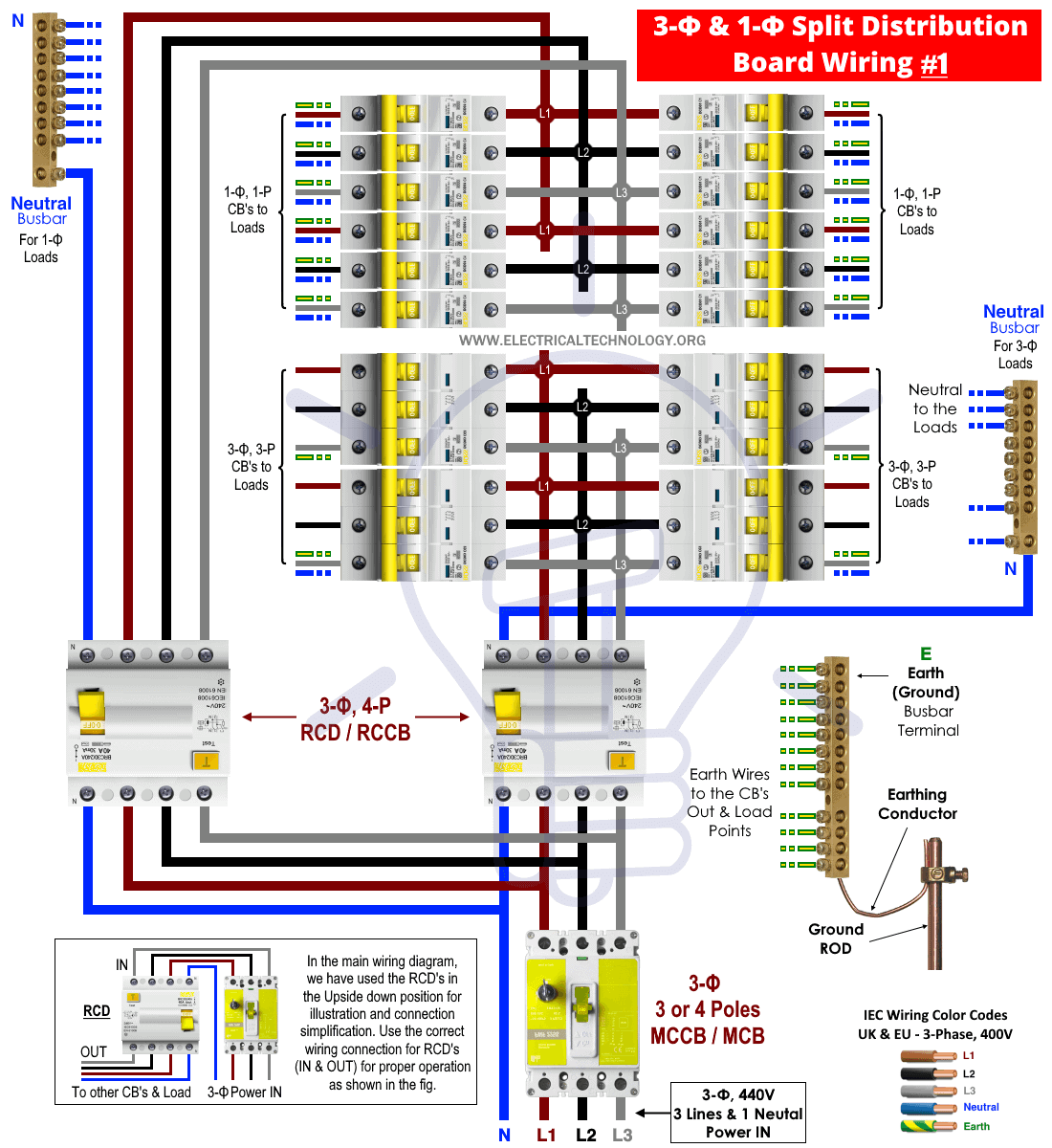

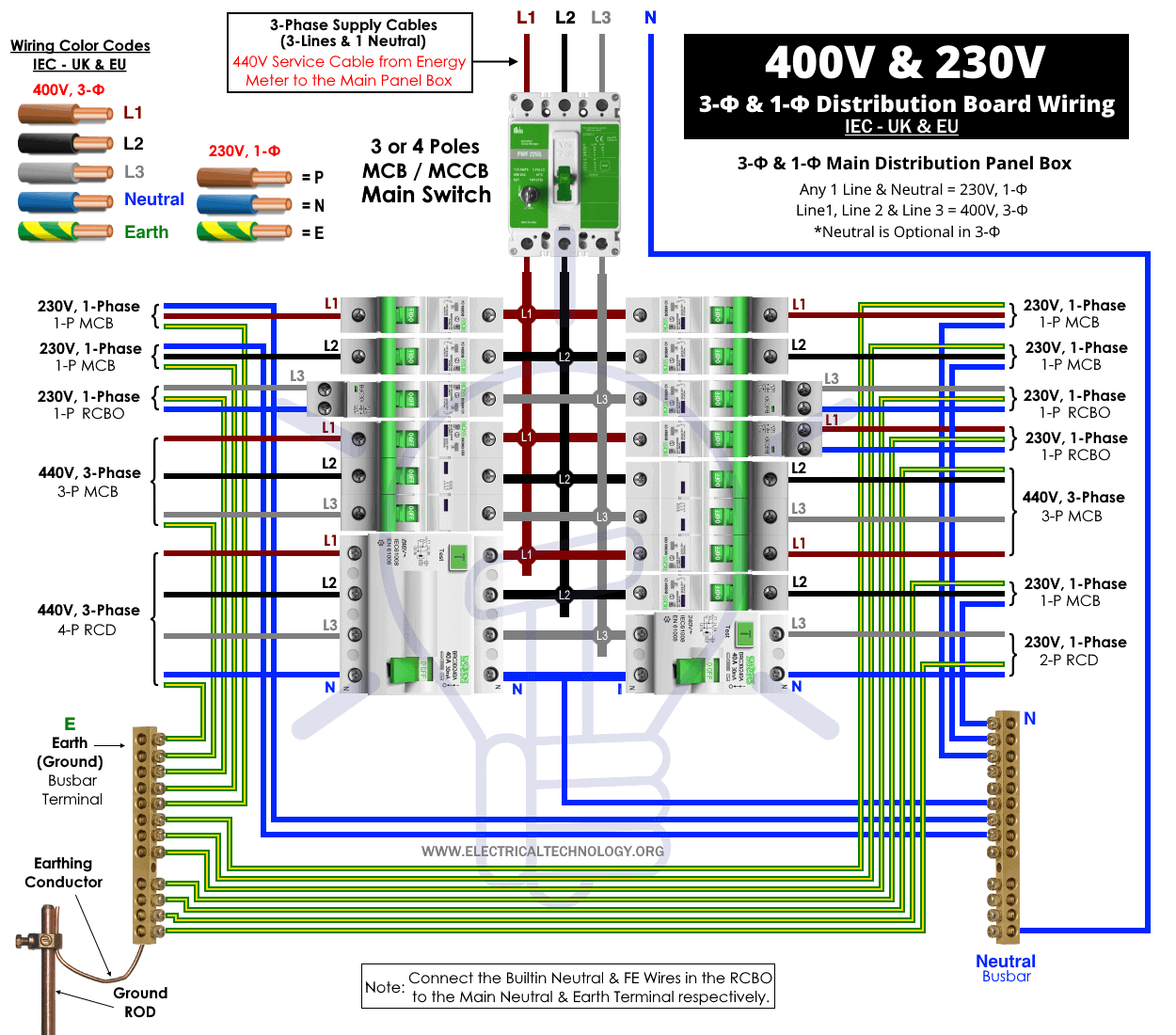

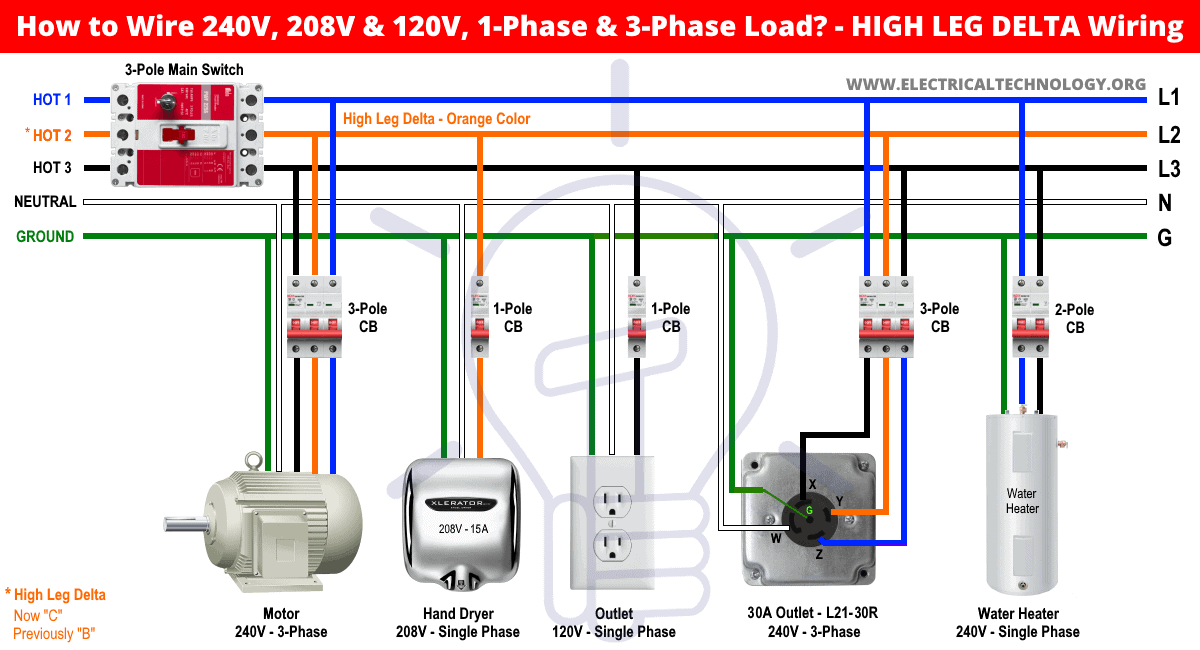
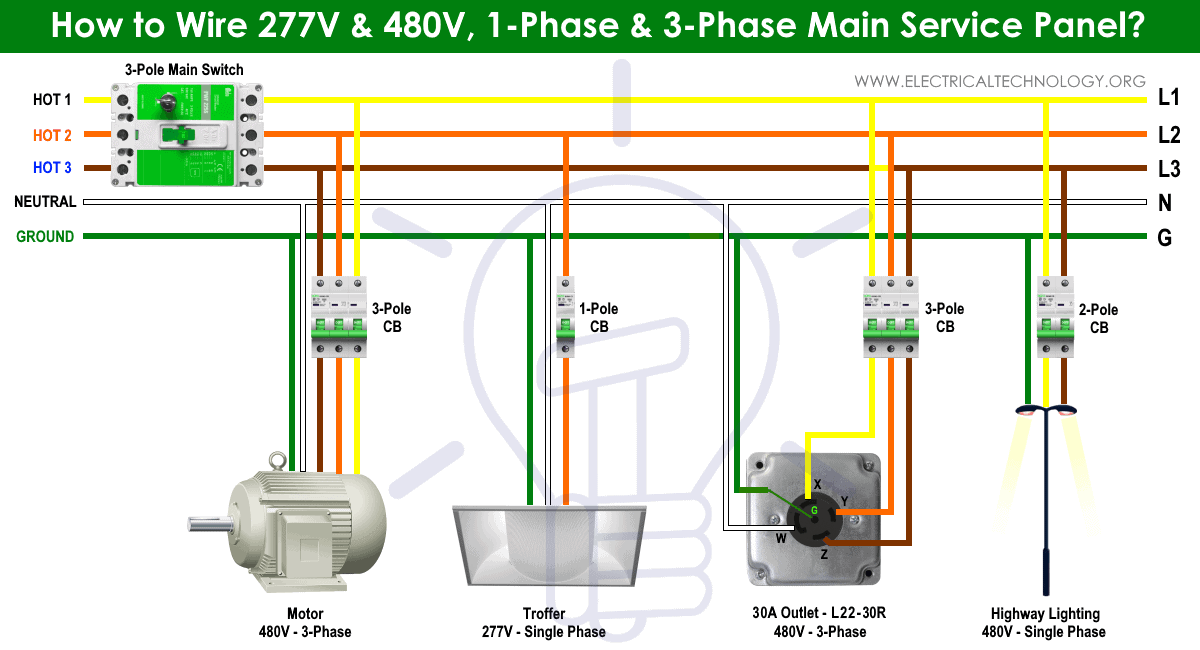
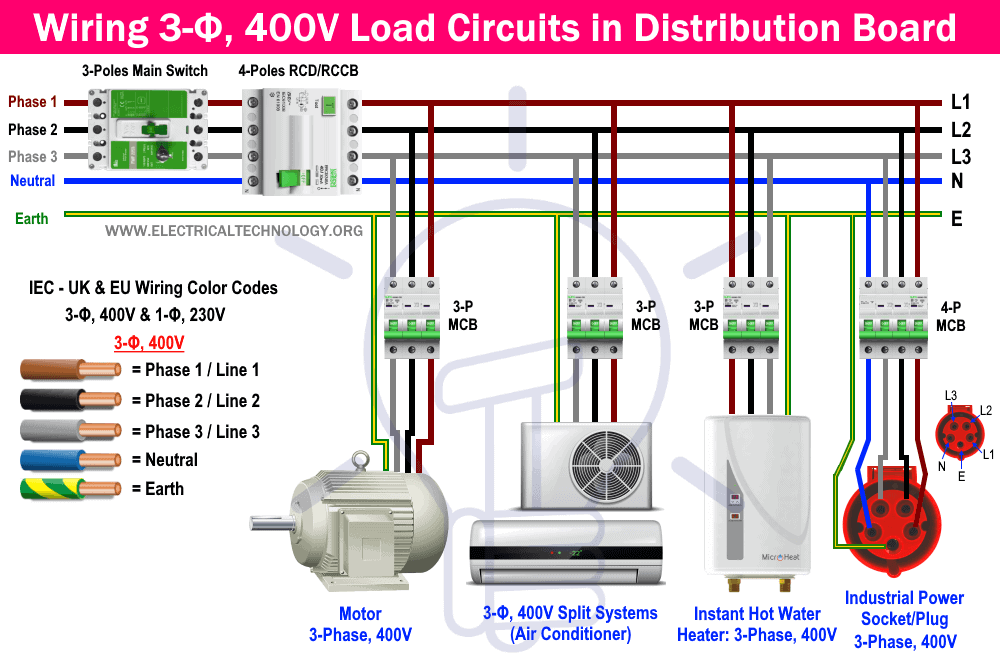

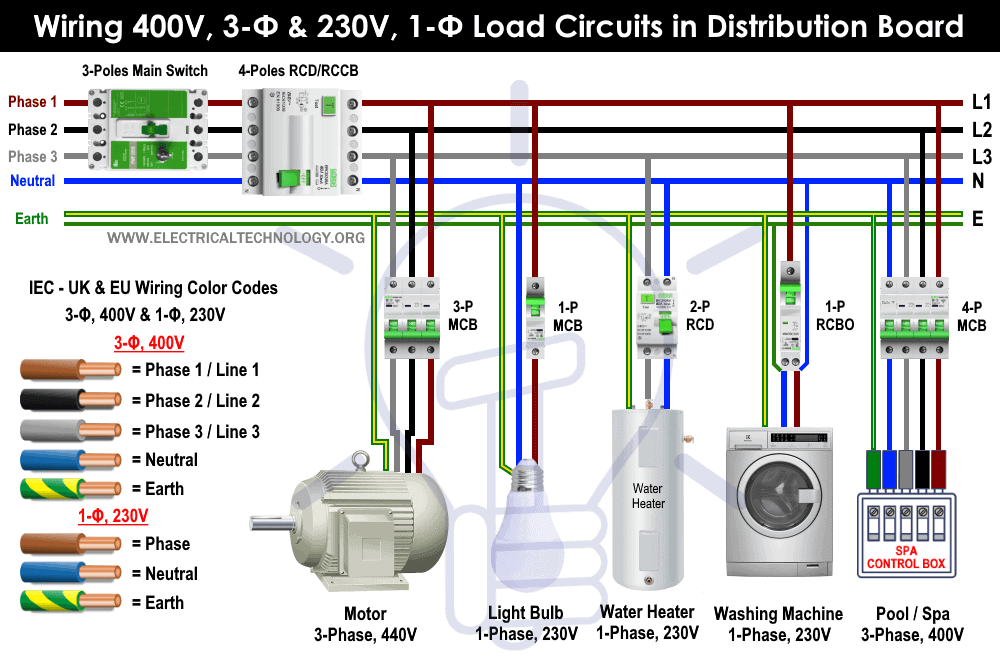
 Why is the Neutral Prong or Slot Wider on a Plug or Outlet?
Why is the Neutral Prong or Slot Wider on a Plug or Outlet? Why are there Grooved Slots in the Pins of Two Pin Plugs?
Why are there Grooved Slots in the Pins of Two Pin Plugs? How to Size a Branch Circuit Conductors with Protection?
How to Size a Branch Circuit Conductors with Protection? How to Size Feeder Conductors with Overcurrent Protection
How to Size Feeder Conductors with Overcurrent Protection How to Size Service-Entrance Conductors and Feeder Cables?
How to Size Service-Entrance Conductors and Feeder Cables? How to Size Equipment Grounding Conductor (EGC)?
How to Size Equipment Grounding Conductor (EGC)?